Welcome to the Parallel Parking Tutorial for New Drivers
Parallel parking for some reason has a bad rep. But it can be nearly perfected with practice.
There is no need to drive around the block 15 times looking for a ‘pull through’ or ‘pull over’ spot. You don’t need to avoid parallel parking! Learning it is not that bad. You can totally learn how to parallel park.
Experienced drivers just do it. When it comes time to teach someone else how we are often at a loss for words. What are we actually doing when we parallel park? Do we even know?
Hopefully, these tips can give a rough guideline. Maybe they can’t teach a new driver exactly what to do down to an exact science.
How to Parallel Park: Basics First
Make sure to be familiar with the basics of reversing a car. If you aren’t familiar with the backing basics, check out our blog. Back up in a straight line, and to the left and right. Better yet, reverse in a U-turn shape and a Figure 8.
Learning how to parallel park is going to be confusing if you aren’t familiar with the basics. Learning out of memorization without actually knowing how to properly do it and correct it if necessary… won’t help anyone.
Start with Calm
Start in a quiet, residential area, parking behind one vehicle only, so, you are parallel parking behind one car with nothing behind you.
This is a lot less stressful than trying to park between two cars. Of course, that is the whole point of parallel parking. But, baby steps, baby steps people.
Starting with one allows you to practice without stress. And, it benefits the driver, the co-pilot, as well as someone’s shiny, expensive Mercedes that may be behind you otherwise.
Adequate Space
When you do park between vehicles, make sure you have a reasonable amount of space between them. A reasonable space is 1 and 1/2 car lengths.
The Other Vehicles
Make sure the other vehicle is properly parked. Since you’re using this vehicle as a guideline, make sure it’s a good one. If it is crooked, on a weird angle, or very far away from the curb, then it may be difficult.
It’s likely you will also be too far from the curb or crooked when you are finished. It may also be more difficult to correct it.
A properly parked vehicle should be straight and within 30 cm/1 foot away from the curb. Sure, this may be no problem for the skilled, experienced driver. But for a new driver, this is just a big headache.
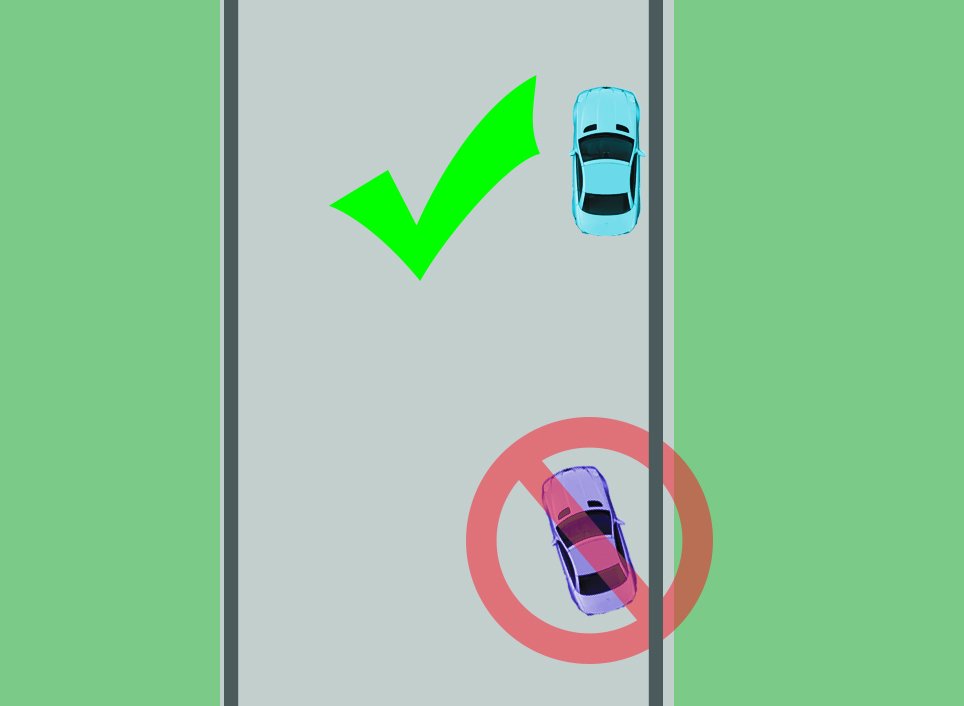
Parallel Parking – Assess
Assess the size of the vehicle parked as well as your own. If you pick a vehicle the same size as yours, it may be simple to parallel park. If you park behind a Smart Car or Ford F350 pickup truck, you will need to make adjustments.
For example, you will not back up on a straight line as much for a Smart Car, and perhaps a little or a lot extra for a Ford F350. Quite simply…
…if you start farther from the curb, you still need to get your vehicle close to the curb.
…if you start closer to the curb, then you won’t need to spend a lot of time getting closer still.
How to Parallel Park – Signal
Signal early and check your rear-view mirror. Make sure – if there is a vehicle behind – that the driver understands what you are planning to do. This helps to make sure it is not going to rear-end you!
Watch the vehicle behind to see what they’re going to do. They will either wait patiently, or they will go around you. If they go around, stay stopped until they are gone. This is important because the front of your vehicle will swing into the lane once you start moving.
Guidelines
Some people say that you can line up your side-view mirror with the side-view mirror of the other vehicle. This might work and is a good rough guideline. However, the main point here is to:
Try and line up your rear wheels with the rear bumper of the other vehicle.
When you line up the mirrors, your rear wheels might be well in front of the rear bumper on the other vehicle. This may lead the front of your car to be much too close to the other vehicle’s rear when you start moving.
Of course, it is all depending on the size of the vehicles. Look at your car from the outside. Draw an imaginary line from the rear wheels up to the window which you can see when sitting in the driver’s seat.
Does it line up with something? You could even put a small sticker at that point so you know where it is. In other words, from the driver’s seat, if you look over your right shoulder and you know that the rear wheels are located directly below the small triangle window (or sticker) that your vehicle has in the back seat, then this can be helpful.
Otherwise, you must guess when the rear wheels are lined up with the rear bumper. Also, make sure the vehicles are sort of close, but not too close.
You don’t want to knock off the side mirror of the other vehicles as those mirrors have feelings just like people do. Usually, aim for an arms-length. Again, this is an art and not science. Do not get too technical. You do not need to bring a measuring stick and protractor.
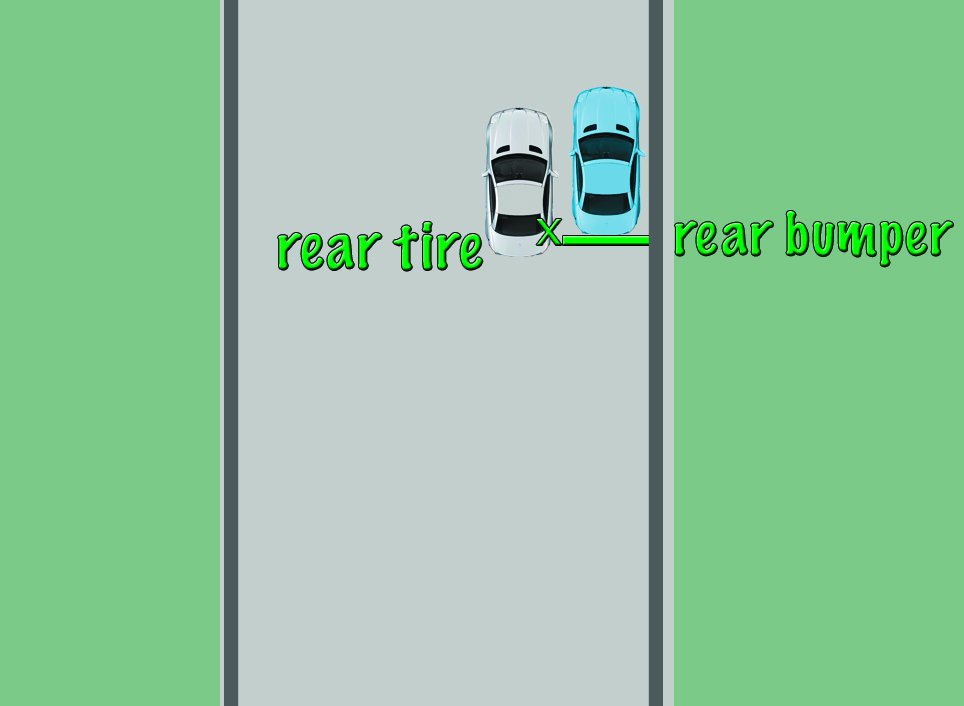
Parallel Parking – arm’s length between the vehicles
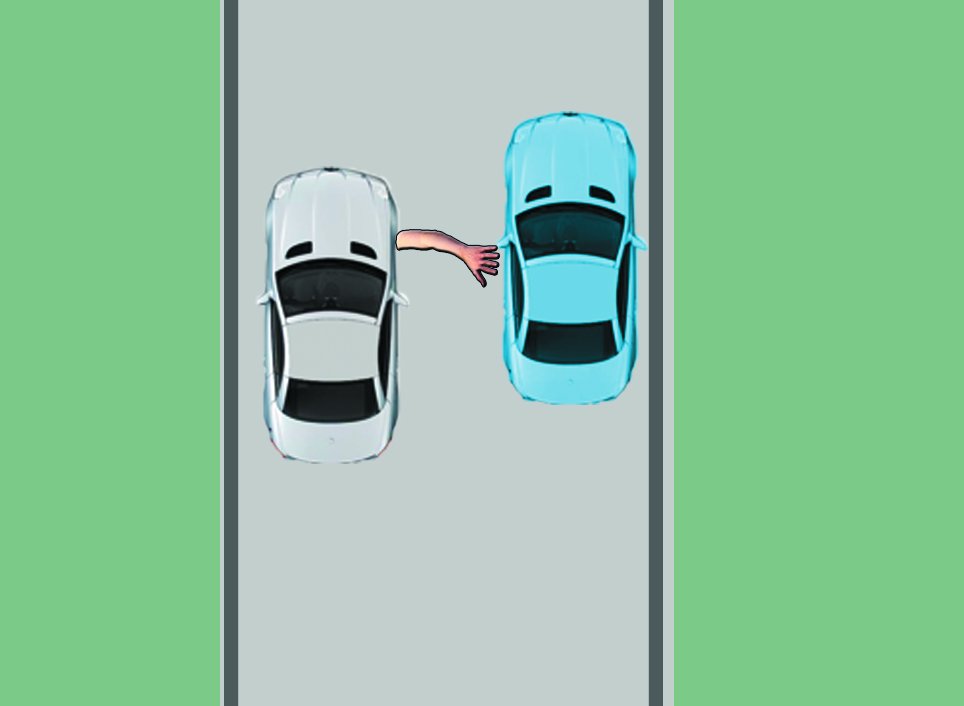
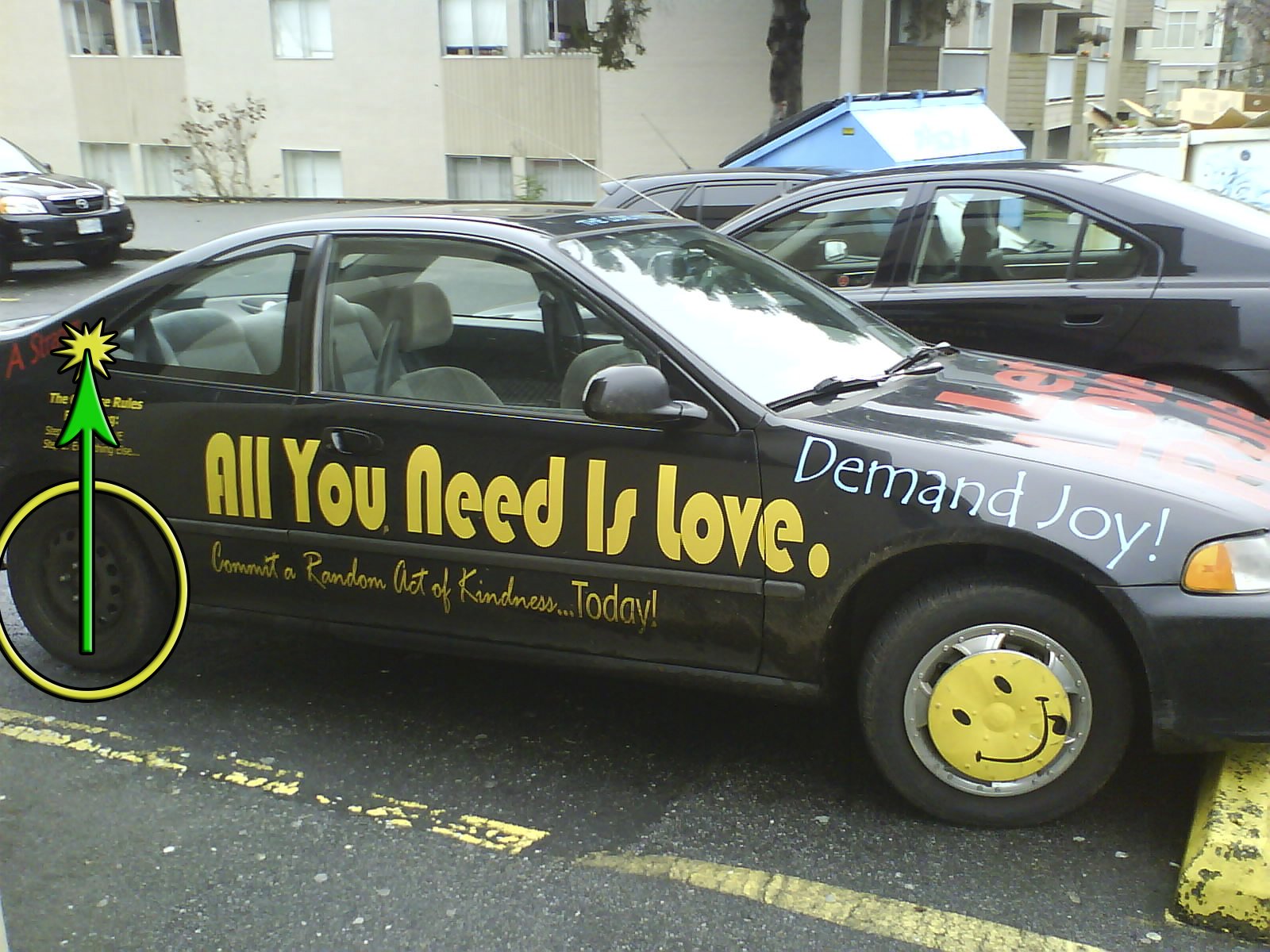
Moving backward
Shift into reverse to activate your vehicle’s white reversing lights. Do your 360-degree check to make sure there are no other road users who may be potentially planning to move into the same space as you. Examples are pedestrians, cyclists, or other vehicles that may be about to reverse out of a driveway, or a vehicle coming out of a lane or back alley.
Since you should be looking over your right shoulder for most of the time, you should start your 360-degree check with a left shoulder check. Then, do a complete scan of all mirrors and areas from left to right, and then continue looking right for your procedure.
360-degree check when parallel parking

Turning
Turn your steering wheel to the right with two hands. Preferably, do this quickly with the vehicle moving slowly so as to not dry steer.
You should be looking mostly over your right shoulder. You want the back of your car to go rightwards, so you turn your wheel to the right. Usually, you should turn your wheel about one full circle, or maybe a bit more.

Turn Right
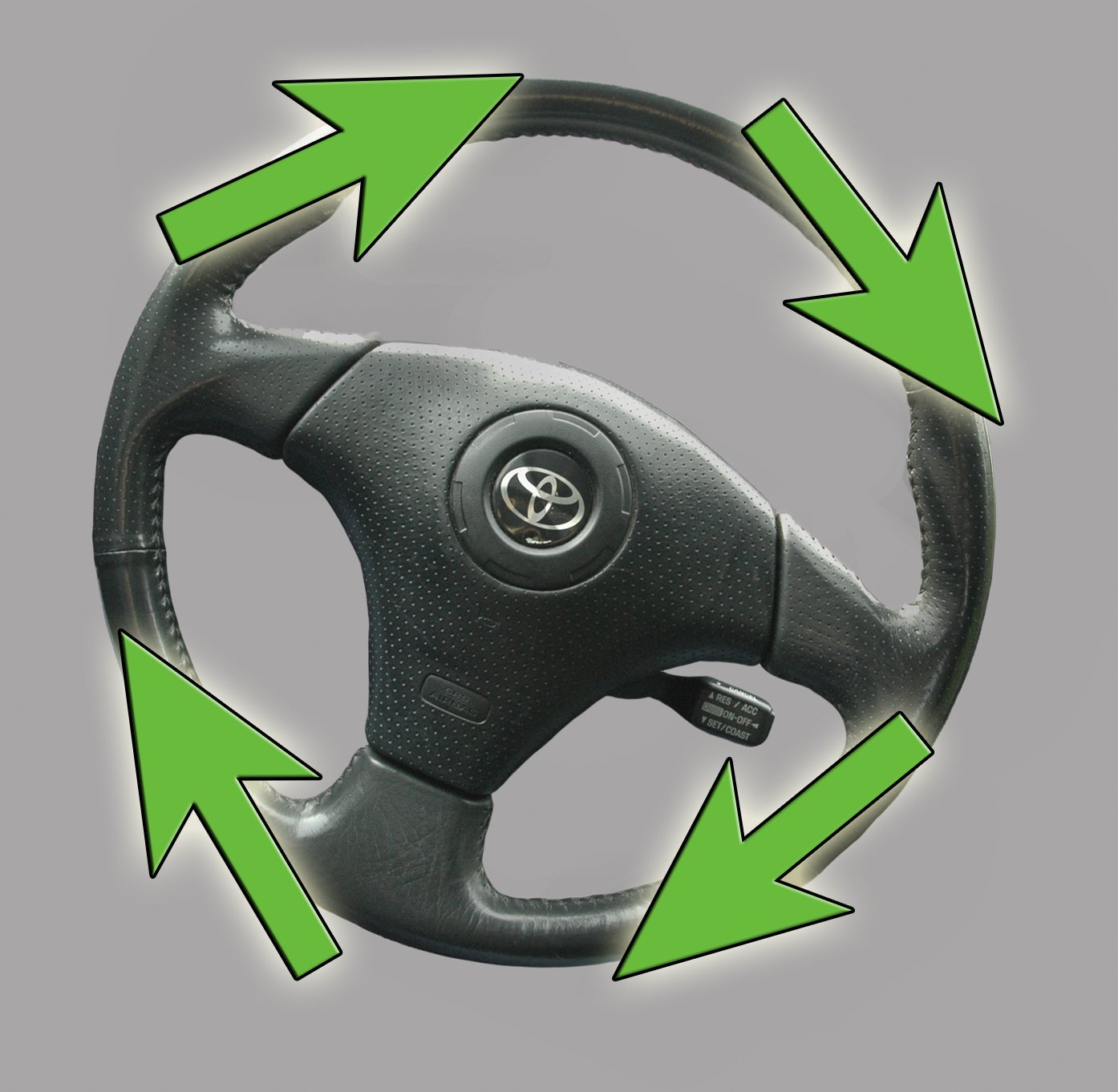
Keep the car moving
Hold the steering wheel in place. Let the car move slowly backward until the vehicle is at about a 45-degree angle.
This can be hard for new drivers to guess and I really don’t have any magical tips for this. It is about halfway between being straight and being on a 90-degree angle.
When you are on that angle, you must return the steering wheel to the straight position. So, if you turned it one circle to the right, this means you must turn it one circle to the left. The tires are now pointed straight ahead, but the vehicle is at a 45-degree angle.
Straighten the Steering Wheel

Turn Left
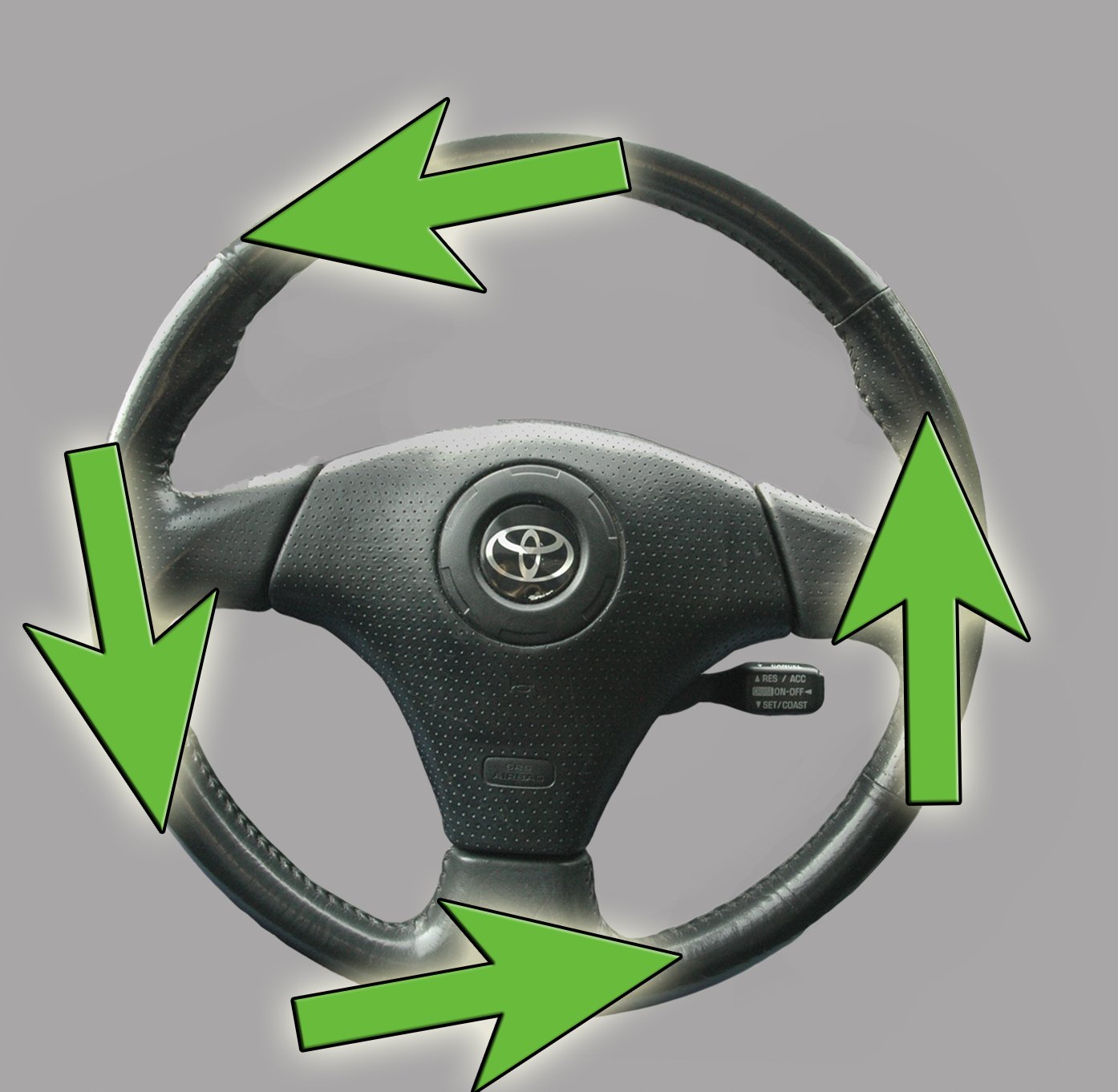
Go Backwards
Let the car reverse in a straight line while on this angle for approximately one meter. You should be still looking mostly over your right shoulder; this time you can have one hand at 12:00 ish since you’re going in a straight line.
Again, this amount may differ depending on the size of the vehicles. Some people have used guidelines for this, but I have found they do not necessarily always work. It depends on the size of your vehicle.
What I do personally is look in my right side-view mirror
In that mirror, you can see perhaps a bit of the side of your own car. And a bit of the sidewalk. Then, you can see a triangular-shaped chunk of the roadway.
When you can no longer see the triangular-shaped chunk of the road – so, all you see is the side of your vehicle and the edge of the sidewalk or the edge of the roadway, then that is a perfect time to turn left.
I know that might make no sense and I will try to make a video about this sometime soon. In the meantime don’t worry about it and just do your best. Practice is the main thing that will improve this skill, just like any other.
Go straight back
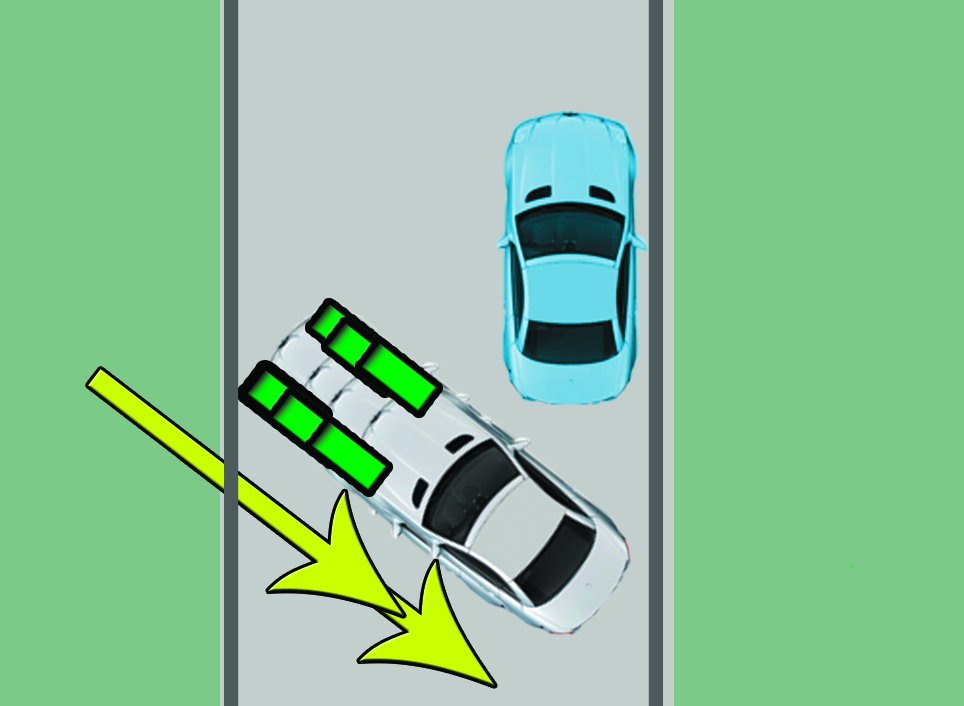
Look over the right shoulder (most of the time)

Turn Left
Turn the wheel quickly to the left with two hands all the way. The vehicle should be moving slowly. If you turn the wheel to the left, but not enough, then you will probably get too close or hit the curb. So make sure it is turned swiftly and all the way.
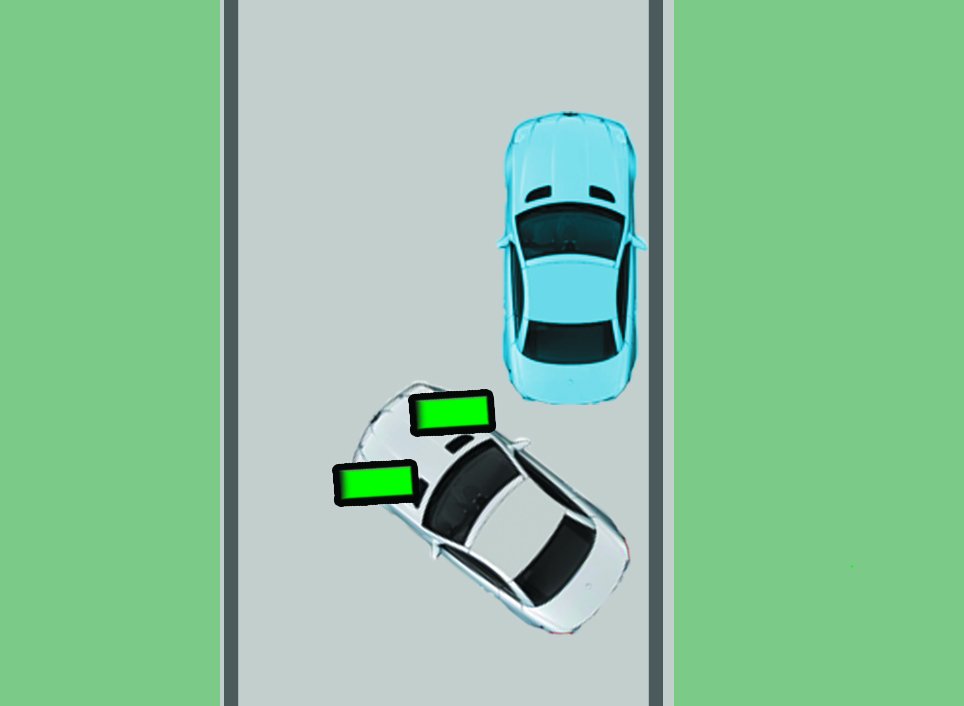
Turn Left

Check
Check and see how it looks in your right-side-view mirror. Since it is not very classy to wait until you hit the curb, try to look carefully in the mirror and stop before you hit the curb if it looks like that is about to happen.
If all looks good, let the car keep rolling backward and hold the wheel where it is. Hold until the car is straight and parallel to the curb. Again use the right side-view mirror as well as look ahead and look behind over your shoulder for safety.
Make sure you stop when the car is parallel. If you keep going, you will hit the curb with the front tires, since they are turned all the way to the left. If it looks good, then you can move the vehicle forward and straighten the wheels if you like. Although, there is no law that says you have to do this.
Generally, you want your car to be equal between the car in front and the car behind. This way, all vehicles can exit the parking spots as easy as possible and vehicles are not getting blocked in.
Corrections
If it looks like you’re too close to the curb, then you can correct this easily. Simply move the vehicle back onto the 45-degree angle and then straighten the tires. Then, turn left earlier/sooner than you did the first time and the vehicle should now fit into the space.
OR
Probably easier to simply move the vehicle into a forward gear. And, turn right all the way.
This is a lot of steering but is probably the easier way of correcting it. This works as long as you have enough room in front of you. You should if you have followed the instructions.
This will get the front end of the car into the spot. Then you can simply reverse a bit to leave some room in front of you. If you have the opposite problem, your car is too far away from the curb – then don’t panic.
You can correct this problem without doing the whole entire thing over again. What you need to do is pull out and get the car onto the 45-degree angle again. Then get the tires straight again. Then, reverse on that angle for a bit longer than you did the first time, and then turn left, and it should work out much better.
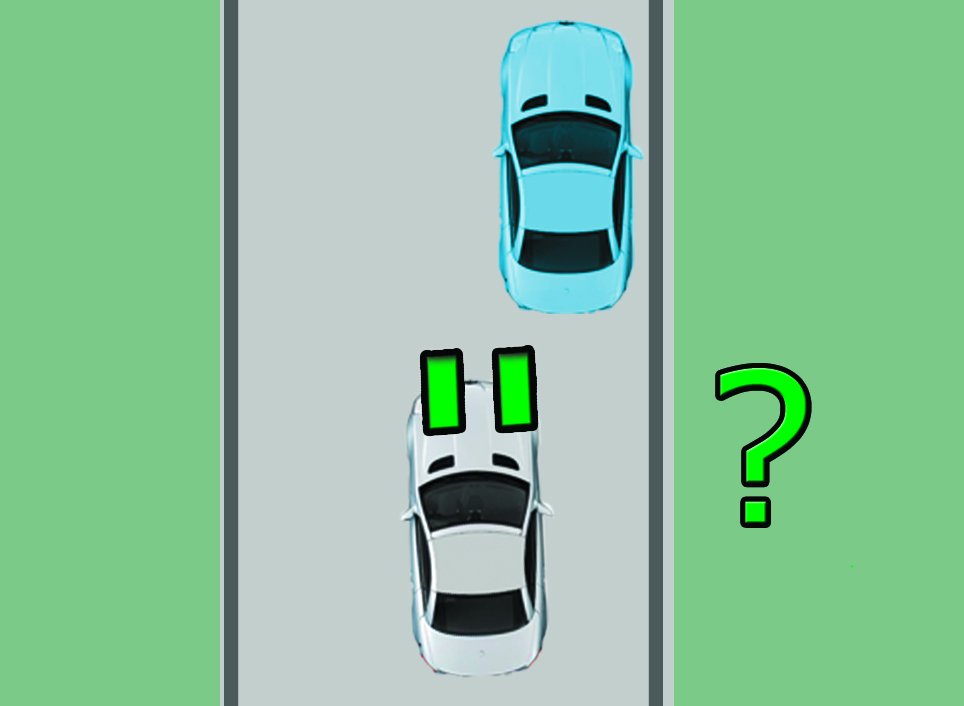
Make very minor adjustments when you are making corrections because it is easy to over-correct.
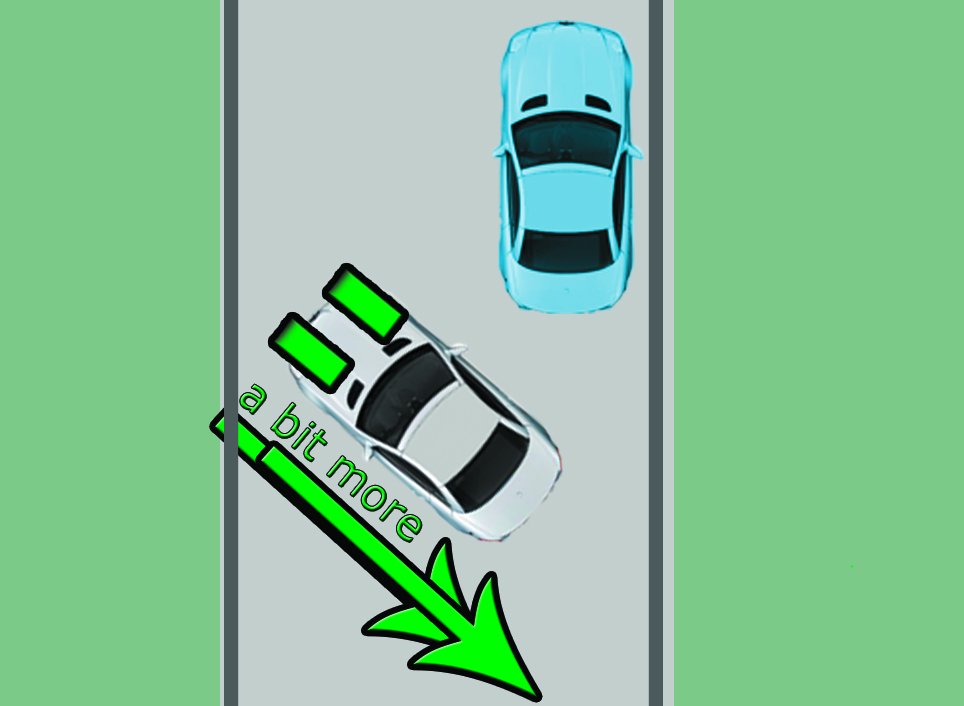

Helpful Comment from a Reader:
- John Smith below 2 years ago. Very close but slightly different to the method I learned. This advice was given by a world champion racing driver from Scotland many years ago and works for any length of vehicle.
- I used to work for a very large Provincial phone company in BC as a driver of a 6500 kg.. truck.
- First you arrive at the space you intend to park in and bring your vehicle to a stop, beside the space between the 2 other vehicles, and you make sure your vehicle can fit the space plus some extra at both ends.
- You then pull forward until the back of your vehicle is level with the back of the other vehicle, but not too close sideways (arms length)
- You then begin your reversing right turn carefully past the front vehicle and using your mirrors (only when experienced) sight down the left side of your vehicle using your left mirror until you can see the right marker light of the vehicle behind you.
- At this point you begin to turn the steering wheel fairly quickly the other way(left) in order to bring the front of your vehicle past the front vehicle (not too closely- do not hit) and into the space.
- At this point you can sight the right kerb in your right mirror and straighten out and stop your vehicle before hitting the one behind.
- If you are not perfectly parallel with the kerb you can make some quick corrections within the length of your space without the need to start all over again unless you badly misjudged the space.
- Truck drivers cannot see through windows and have only their mirrors to guide them.
- Trust me – with very little practice this works like a charm and served me well in over 45 years of professional driving.
Thank you Gordon for this helpful info!
Conclusion – Parallel Parking
Parallel parking lives at the center of a lot of people’s nightmares. In reality, it’s not that hard. And, there are things you can do to lessen the stress of it all, including practicing in a quiet, residential area.
The other thing you can do is practice parallel parking just behind one vehicle, at first. I know this seemingly defeats the purpose or whatever, but you need those kinds of easy baby steps when you are learning.
You can then park between two cars that have a large space between them. Then, gradually choose a smaller space as your skill improves.
The real thing you should be afraid of is intersections,(intersections close to your home) since that’s where the majority of crashes happen. While parallel parking can be stressful, it’s not actually dangerous compared to what can happen at intersections.
Even if the worst happens and you make contact with another vehicle while parallel parking, it’s likely not going to hurt people. It’s not going to be the end of the world. So yes you do need to learn this skill; perhaps you’ll even find it useful. It does get easier with practice. So don’t give up, it does get better.
Read more:
- Reverse Stall Parking 101 – Tutorial for New Drivers
- Reversing a Car – Basics – Huge Guide for New Drivers
- ICBC Tuning Up For Drivers Manual

A woman was driving across the white lines in a parking lot not bothering to use the lane that was…